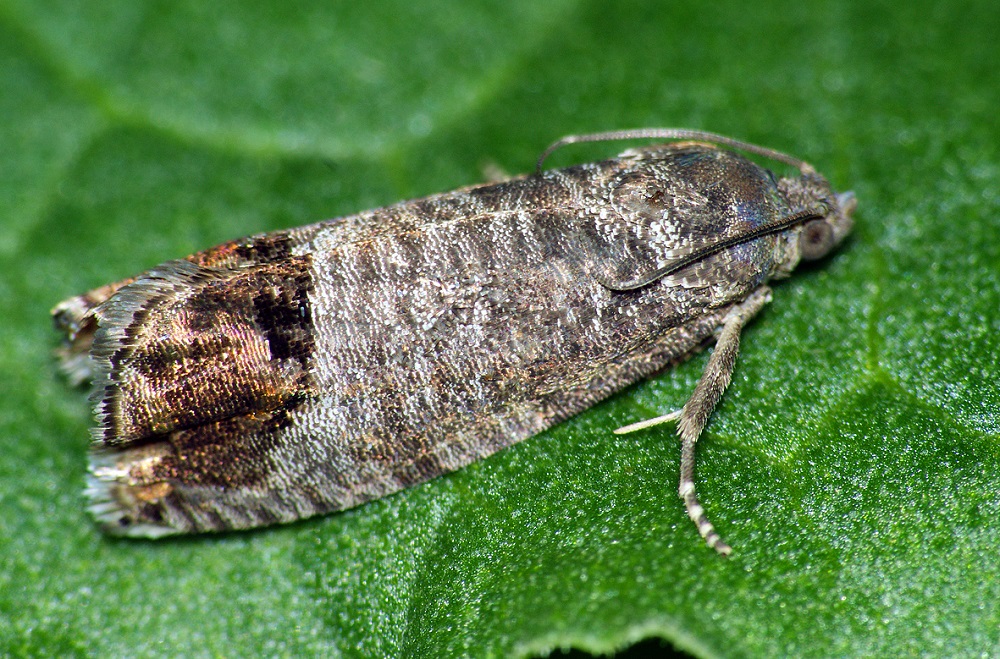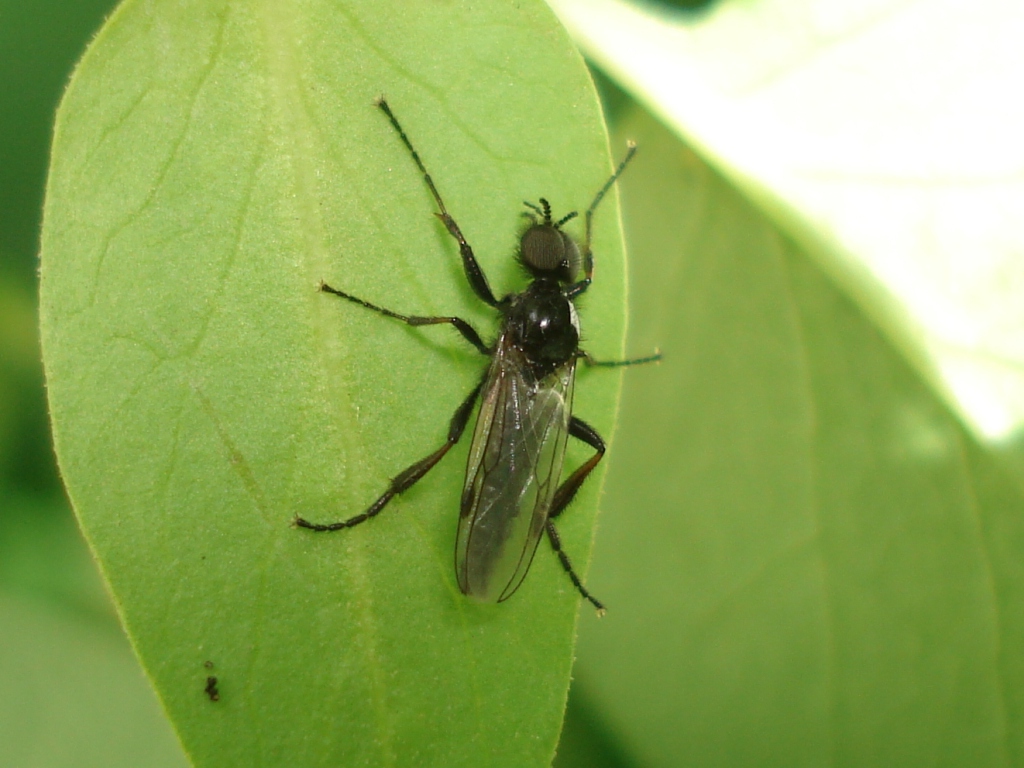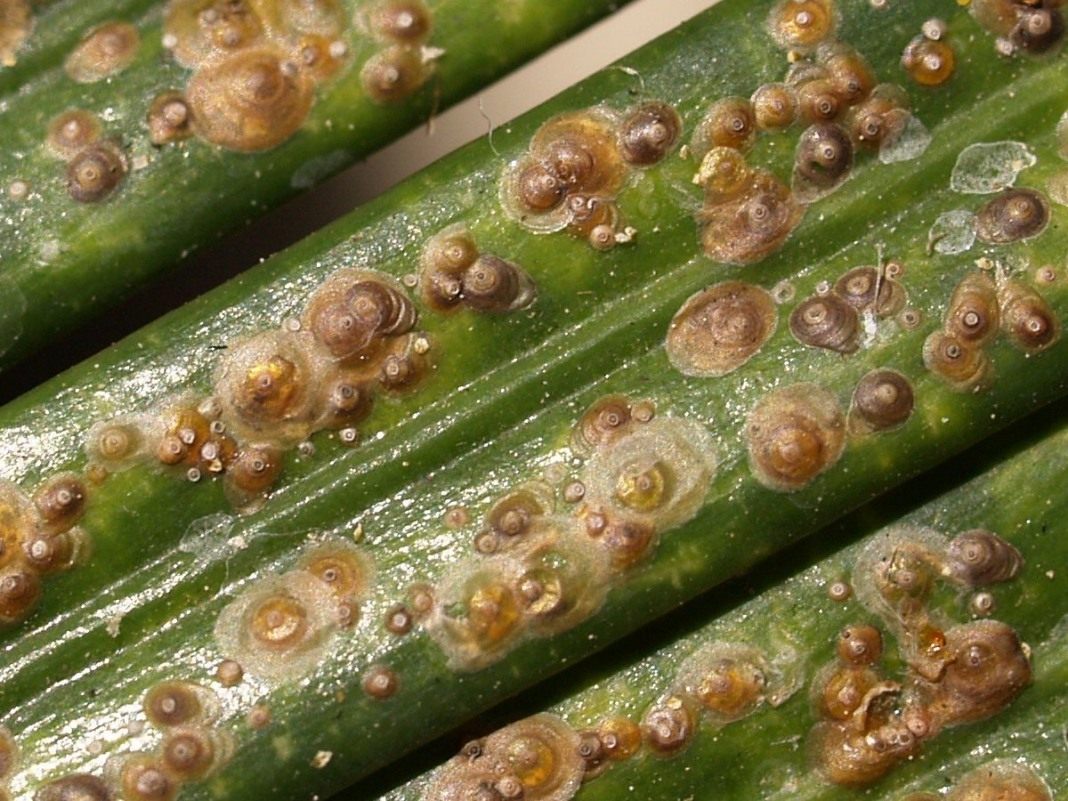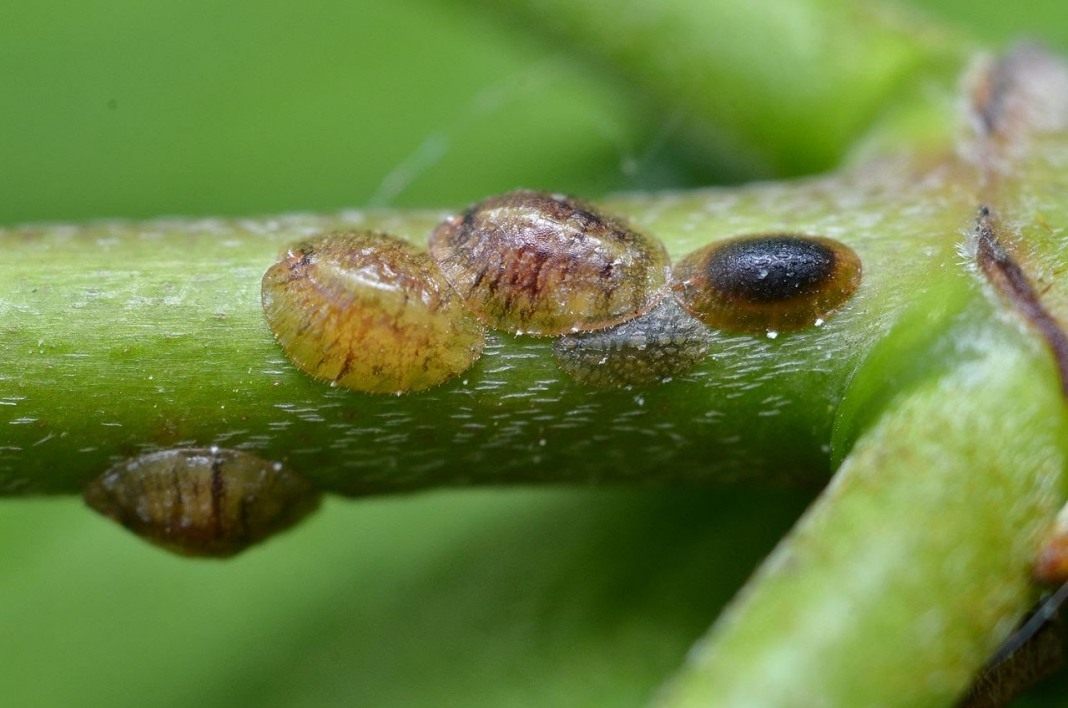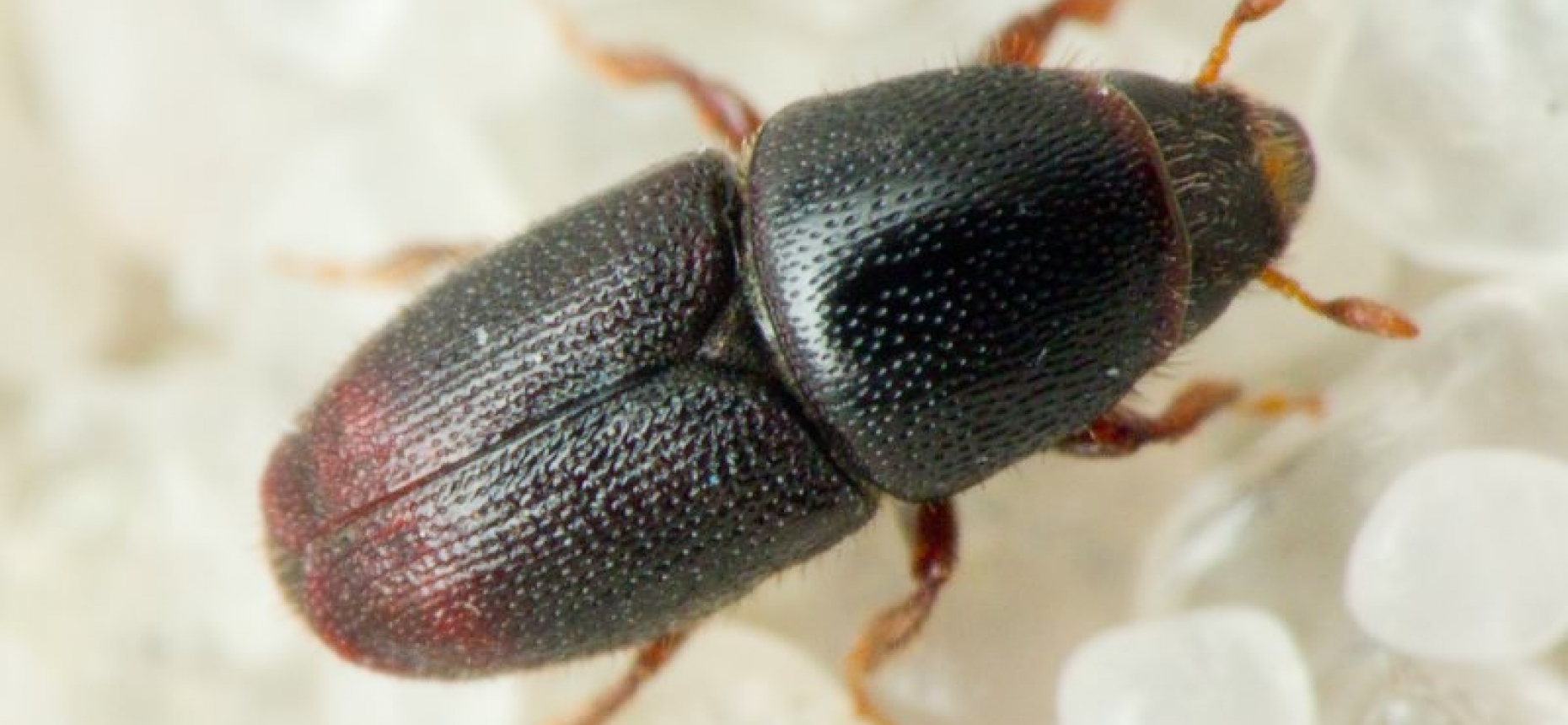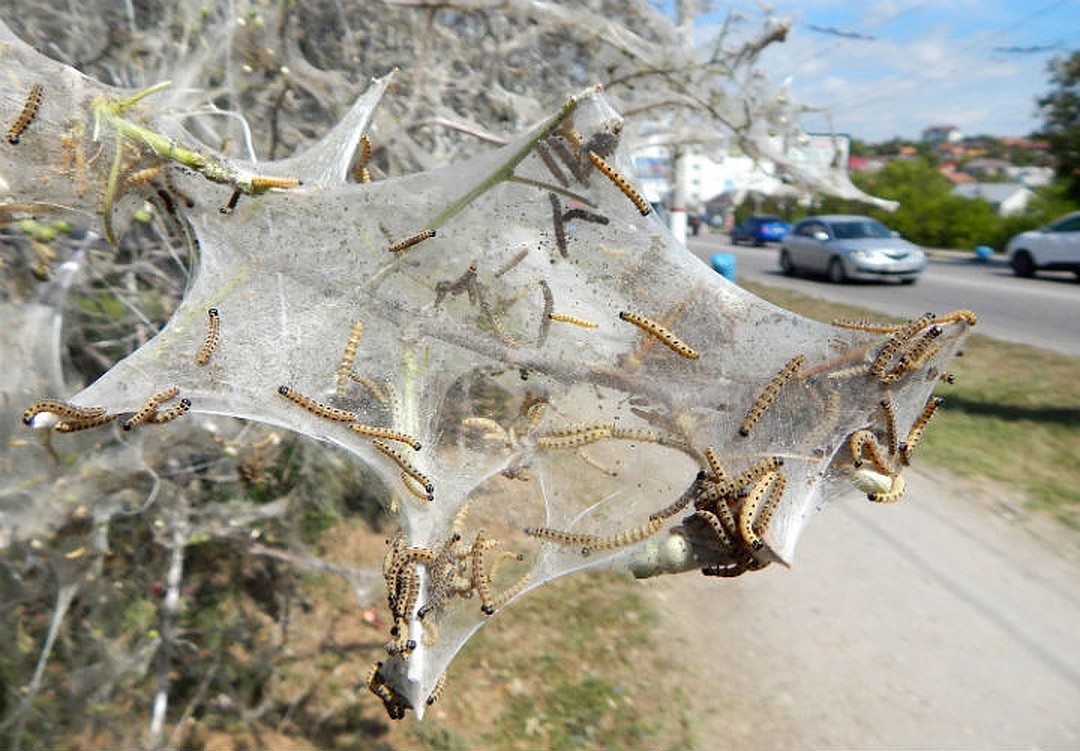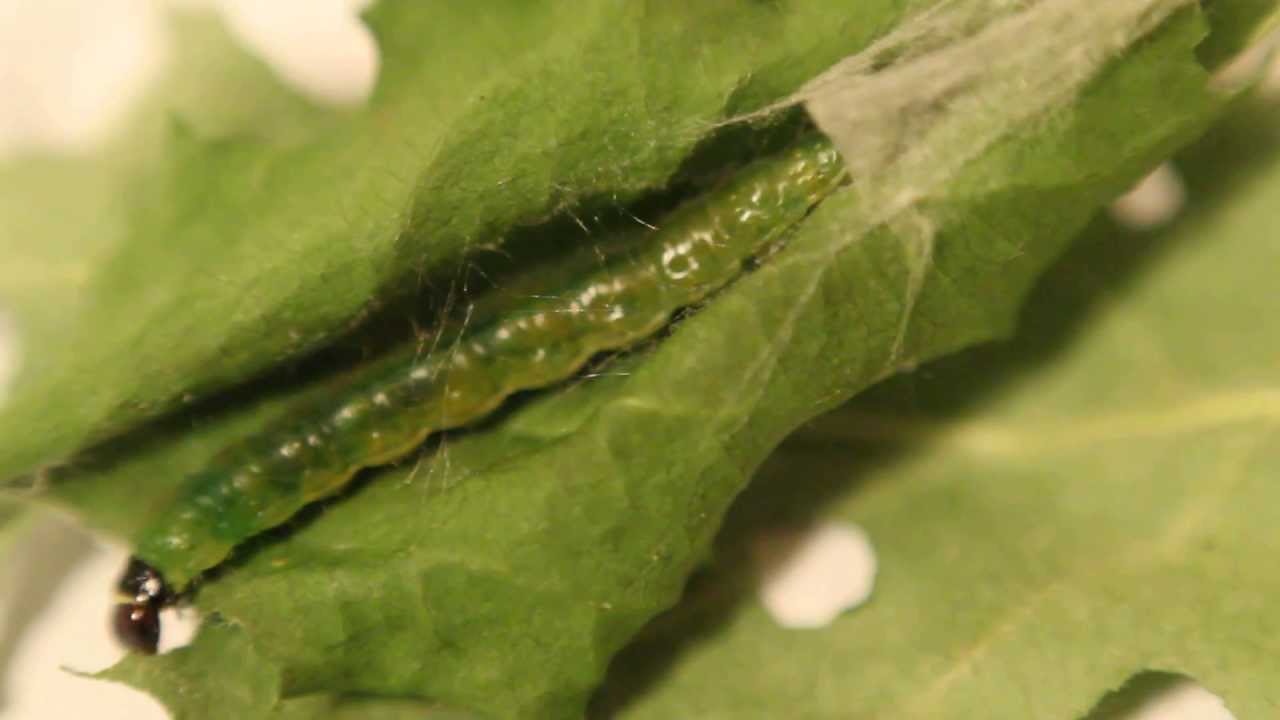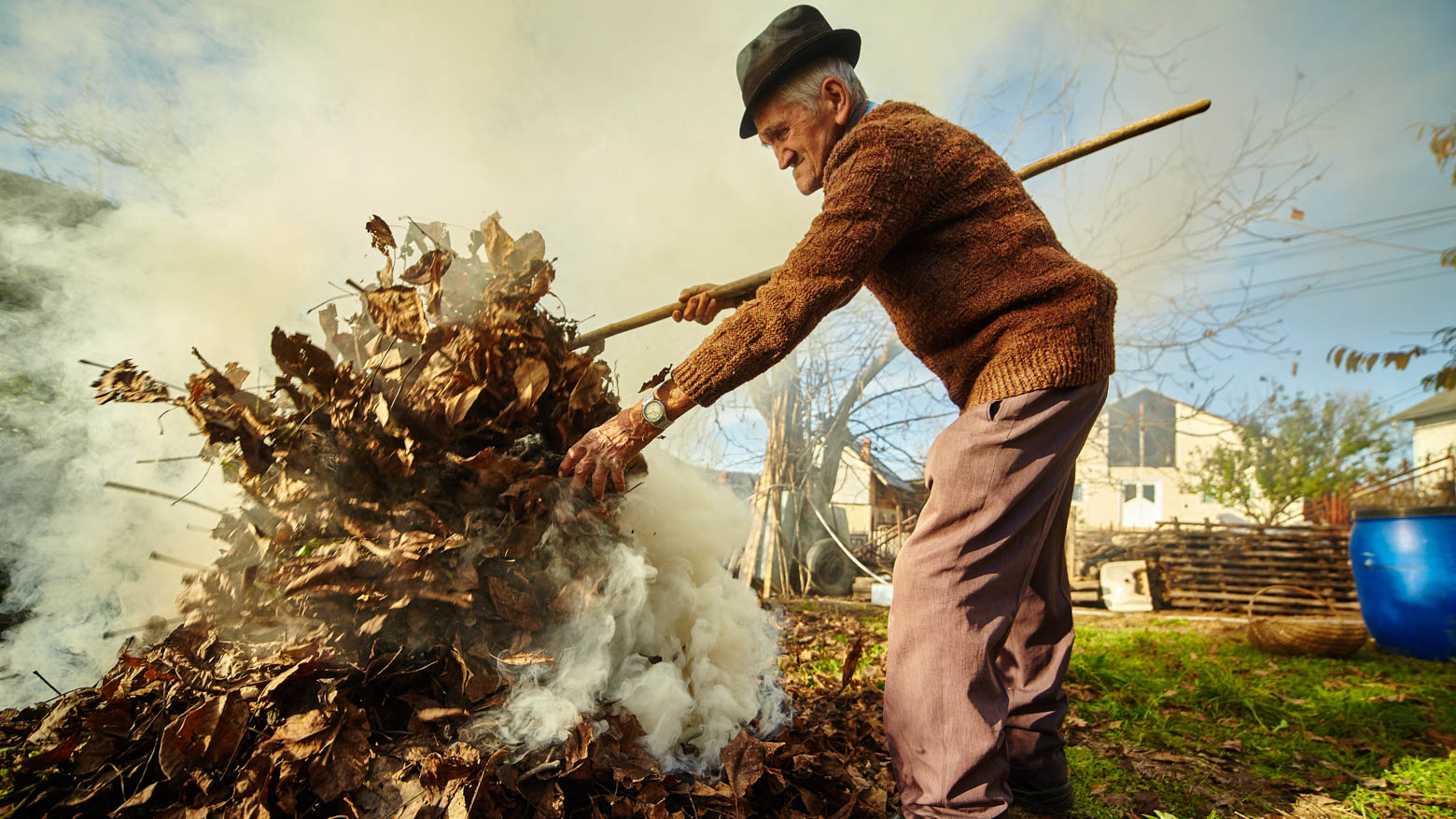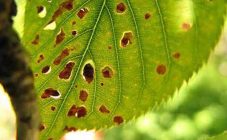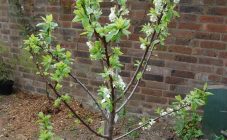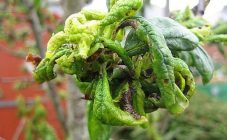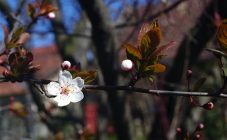Content:
Plum pests inflict great harm on fruit and stone fruit crops. They destroy not only fruits, but also foliage, damage the shoots and the tree itself. Many parasites go unnoticed. It is very important for gardeners to recognize voracious insects by description in order to effectively fight them.
Plum sawfly
Distinguish between black and yellow plum sawfly. The insect develops when the plum blooms, forms ovaries. For wintering, the pest in the larval phase goes into the ground to a depth of 20 cm. With the arrival of the spring season, the larvae pupate. The emergence of adults occurs during the flowering period.
You can see small flies with a yellow-brown color and transparent wings - these are yellow sawflies. There are their fellows - black sawflies: flies with brown veins. However, the larvae are more harmful, which mercilessly eat the buds.
In the beginning, harmful insects concentrate on plum varieties that will bloom in early spring. If it is at least + 10 ° C outside, and gardens are blooming en masse, this is considered the optimal time for the plum sawfly to fly out and lay.
The female egg-laying sites are easily identified by small protruding rusty spots. The number reaches 7 eggs per ovary. The hatching of the larvae falls at the end of flowering and signals the penetration of pests into the buds.
Insects love to live on landings, which are different:
- flowering;
- thickening of the crown;
- wind protection.
The prolonged stage of flowering and budding is a threat to the future harvest of the plum: the owners of the plot may miss 90% of the fruits.
Control methods and prevention
Spraying plums a week before flowering with Kemifos or Fufanon is referred to as measures to combat the plum sawfly. When flowering is complete, the procedure is repeated with the same chemicals.
For preventive purposes, you will need to dig up the soil in the near-trunk area. Before flowering, plum sawflies are shaken off the tree with a rag and eliminated. In summer, it is required to remove infected fruits.
Plum moth
The harmful insect eats both plums and other fruit trees. It hibernates on a tree under the bark on a section of the trunk that is located closer to the roots. The end of the plum blossom means the emergence of unattractive gray-brown butterflies, which resemble moths. There are two generations of the plum moth per season, which lasts until the end of the last month of summer.
Parasites lay eggs with a green-white tint not only on the lower part of the leaf, but also in the fruit. The appearance of caterpillars occurs after 2 or 3 weeks, as the plums bloom. When introduced into the fruit, they make progress towards the cuttings, disrupting the flow of nutritious juices, which causes the termination of the development of the fetus and its fall.
The stalk turns red.In unripe fruits, the pest gnaws at the bone, and in ripe plums it eats the flesh near the bone, leaving excrement in the passages.
Control methods and prevention
They fight the moth by tying a sacking belt on a tree. The caterpillars are harvested by hand after collecting the plums and destroyed. Cracks and wounds on the drain are washed with potassium permanganate, garden pitch is used to cover it up.
Preventive spraying with karbofos is suitable against the moth. To the place of digging soil in the near-trunk zone. To prevent comfortable wintering of caterpillars, carry out:
- sanitary pruning;
- cleansing dead bark;
- whitewashing of trunks.
Plum thickened
It is an inconspicuous hymenoptera with transparent wings, in which the length of a black body is up to 1 cm, flies out when the plum blossoms. Females actively lay in the formed ovary: about 40 pieces. The larvae of the tolstopod develop inside the fruit, feed on it, and provoke the fall of unripe plums, usually in mid-summer.
Plum tolstostozh overwinters in unformed fruits. Young insects will fly out in spring to lay eggs on plum plantings.
Control methods and prevention
The carrion should be removed in time. An effective way to counteract the thickened stem is to process the tree after flowering for 7 days after the plum petals fall.
In the future, it is advisable to attract beneficial insects to the personal plot, which will help get rid of plum pests. Planted honey plants:
- raspberries and clover;
- coriander and sunflower;
- lemon balm and sage.
Shield
Novice gardeners often take a false shield or a scale insect for droplets of gum that have frozen and for outgrowths on the bark.
Distinctive features of both types:
- inactivity;
- excellent disguise.
Pests directly dig into young branches and leaves, growing into them and intensively sucking the sap of the tree. Only young individuals move, as well as males. A massive plum infection threatens:
- weakening of fragile plantations;
- drying out and falling of leaves;
- loss of fruit;
- the death of trees.
Measures not taken in a timely manner make it difficult to fight the shield. Insects reproduce at a rapid pace and produce honeydew - a favorite habitat for the black fungus, which makes breathing difficult and inhibits growth.
The differences between the scabbard and the false shield are in the form. The first parasite has a flattened scutellum. The false shield is like a hemisphere, in addition, it is not absorbed into the bark, detaches mechanically and does not exude dew dew.
Control methods and prevention
If the scabbard is on the drain, the methods of struggle are chemical preparations, coupled with folk remedies.
They fight the scabbard in the same way as when the plants are infected with the scabbard. Parasites are removed with a brush and the branches are treated with kerosene with the addition of laundry soap or a mixture based on alcohol and soap.
Covering large areas with insects is a reason for turning, along with folk remedies, to methods of chemical protection. Spraying is carried out several times with a break a week.
Gall mite
The parasite has an original form. It settles near fruit buds of plum in galls - outgrowths. There are about 400 pests in one gall. Individuals that have overwintered appear on the bark in the last decade of May and feed on plant sap.
In the bitten places, reddish outgrowths appear on the bark, in which females lay eggs. More than one generation of harmful insects is hatched per season.
Control methods and prevention
They fight against the presence of colloidal sulfur on the gall mite. After flowering, plum is treated from pests several times. Cutting and burning of shoots is carried out. The chemicals used for processing are Karate, Fufanon. TSpray once before the start of bud growth:
- at the swelling stage;
- in the stage of isolation.
Popular folk remedies in the fight against plum pests are infusions with a pronounced smell, for example, garlic, which scare off harmful insects. Summer residents use a recipe made from mustard. It will take 10 g of powder to dissolve in 1 liter of liquid. After 2 days, the resulting solution is diluted in a ratio of 1: 5 and plum plantings are processed in early spring in the phase of bud development.
Wrinkled sapwood
A characteristic feature of this stone fruit pest is a small, up to 3 mm, body length. The black beetle hibernates under the bark of a plum tree. The spring season and before the beginning of August is the time for pupation of the wrinkled sapwood larvae. Beetles fly out in May. They harm trees by gnawing grooves in the trunk and shoots, often near the buds or in the branches.
Beetles give preference to sick trees affected by frostbites, therefore they occasionally live on healthy fruit crops.
Control methods and prevention
Timely removal and burning of damaged branches will protect against dangerous bugs before departure. Trees need whitewashing.
Cobweb on a drain: how to deal
The spider mite is a frequent visitor to household plots, capable of ruining the harvest. The small insect, whose size ranges from 0.3-0.5 mm, is difficult to see, including its egg-laying. The spider mite is not a mite species. It is not an insect, it is arachnid.
The color of insects is green, brownish-brown, and even red in winter. The body is round, covered with bristles. Pests hide on the bottom of the crops, and it is difficult to detect them - they are very tiny in size.
Preparations for the parasite are sought if the foliage is covered with brown or white spots. It is unrealistic to deal with the parasite forever. Ticks have increased vitality. In a critical situation, they stop spoiling the tree, but they do not die. Withstand prolonged hunger, hibernate.
Control methods and prevention
It is important for gardeners to know how to correctly deal with plum cobwebs and ticks. The use of both folk and chemical agents will save from pests. Help out in the fight against spider mites insecticidal and acaricidal preparations:
- Fitoverm (2 ml per 1 liter of water) - the death of parasites occurs 6 hours after the processing of the plum;
- Actellic (2 ml per 2 liters of liquid) - 2 treatments are enough to end the pest;
- Karbofos (60 g of the drug per 8 l of water) - the speed of action of the agent is 3 hours.
Apollo and Neoron, Karate and Fufanon, Talstar and Sunmayt - this is how gardeners spray plums from spider mites
The use of folk remedies is appropriate:
- Infusion of garlic. 2 chopped onions pour 1 liter of liquid. They are placed in a dark place. After 5 days, the mixture is filtered. Another 1 liter of water is poured in. Affected plums are processed.
- Tincture of onion peels. 100 g of raw materials are placed in 5 liters of water. After 5 days, it is filtered and used to treat plants.
- Herbal infusion. 100 g of dandelion roots and leaves are poured with a liter of boiling water and left to infuse for 3 hours. The plums are sprayed with the filtered liquid.
- Soap solution. Use household or tar soap at the rate of 100 g of the product per 10 liters of liquid. The operation is performed three times a week.
- Potassium permanganate and hydrogen peroxide. For the solution, you will need 2 tbsp. l. 3% of the drug, which is mixed in a liter of liquid. Plums are processed weekly for a month. The near-stem section of the plum is decontaminated with a slightly pink solution of potassium permanganate.
Leaf roll
Twisted leaves, which are wrapped in cobwebs, indicate the defeat of plums by parasites. Looking closely at the leaf, one cannot fail to notice the caterpillar of brown or olive color. It feeds on foliage, flower buds, and when they are numerous, fruits.
The presence of a harmful insect is also indicated by inconspicuous butterflies that reach 2-2.2 cm with a wingspan. They differ in appearance from similar creatures: the wings are folded horizontally.The common people call them night moths.
Eggs overwinter in crevices of the bark on plums or under fallen leaves. Butterflies hatch in June. Further, the females produce egg-laying: sometimes up to 150 pieces. The larvae travel long distances thanks to the wind.
Control methods and prevention
Summer residents are interested in how to process plums before flowering in spring from pests and diseases. During chemical attacks on harmful insects, which are carried out at an air temperature of +10 ° C and above, they have shown effectiveness:
- Zeta and Spark;
- Kinmix and Fury;
- Sumialfa and Fitoverm M.
Late autumn is useful:
- burning of fallen leaves;
- adding Karbofos to the whitewash.
In the spring-summer period, just right:
- collecting eggs by hand, removing deformed leaves and pieces of bark;
- traps with fermented jam: molasses (500 g per 10 liters of liquid) are placed in the crown of the plum;
- an oilcloth is spread in the root area and a brazier is placed and firewood is set on fire, pouring 500 g of tobacco dust on them. Crumbled pests are picked up and eliminated.
Plum green aphid
Belongs to the sucking parasites that weaken the plum and slow down its growth. Tiny 2-3 mm insects of light green color settle on leaves and young branches, creating a silver-green layer.
Up to 10 generations of harmful insects are excreted, which feed on vegetable sap, herbs and shoots. The invasion of parasites falls in June-July.
They do not disregard these plum pests and enter into a fight with them, which is made difficult by:
- the speed of reproduction;
- moving females from one plum to another;
- transport of parasites by ants.
Control and prevention methods
To preserve the harvest, in the spring and also in the fall:
- cut the crown;
- basal shoots and fattening branches are systematically cut out;
- whitewash the trunks of plums;
- constructing trapping belts.
Plum plantings are treated with folk recipes. A soap-ash suspension is prepared from aphids, which consists of 100 g of soap and 1 kg of wood ash per bucket of boiling water. Ready to use after 2 days of infusion. Processing is carried out at intervals of 2 weeks.
When plum varieties are selected, disease-susceptible varieties are preferred. With competent prevention and care, it is possible to refuse to use aggressive chemicals. Folk remedies will tell you how to deal with parasites in the early stages and how to treat the plum after flowering from diseases and pests. Periodic inspection of the garden, including plum plantings, will reduce the risk of infestation by harmful insects.

